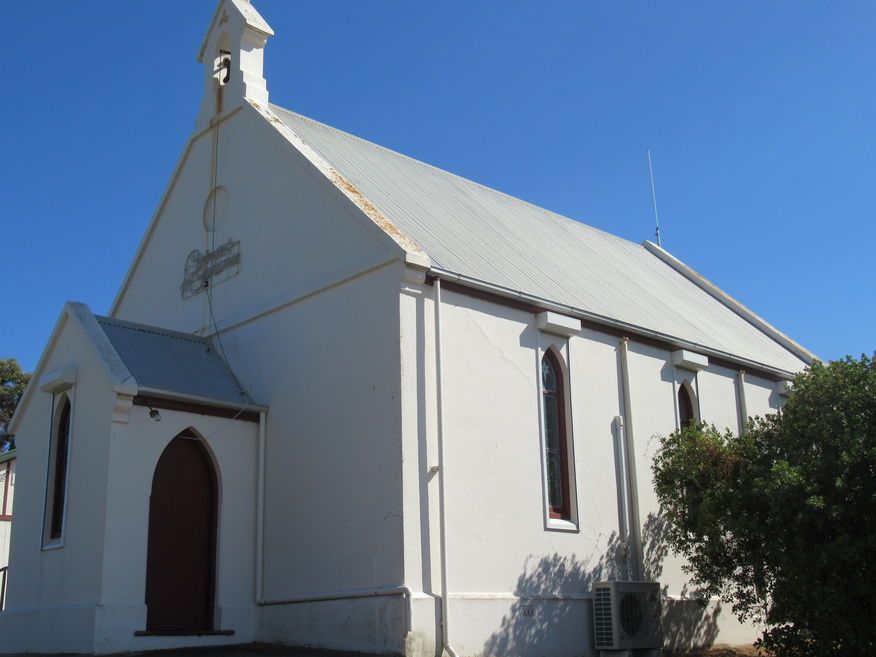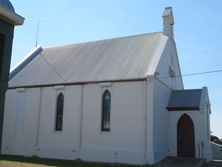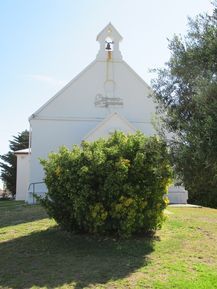A-B Towns | C-E Towns | F-K Towns | L-M Towns | N-S Towns | T-Z Towns | All Towns
Kingston Uniting Church
Kingston SE, SA 5275
Church Information
| Church Name: | Kingston Uniting Church |
| Church Previous Name: | Kingston Wesleyan Methodist Church |
| Denomination: | Uniting Church in Australia |
| Street Address: | 17 Holland St, Kingston SE SA 5275, Australia |
| Suburb: | Kingston SE |
| State: | SA |
| Postcode: | 5275 |
| Foundation Stone Laid: | unknown |
| Foundation Stone Notes: | No Foundation Stone or Memorial Plaque details are known. Information/photographs are invited. A stone tablet on the adjoining hall records: In loving memory - of - Alison Ross Goode - and her son - Corporal Alick F Goode - 1924. |
| Date Opened: | 18-12-1887 |
| Date Closed: | unknown |
| Email: | admin@churchesaustralia.org |
Comments
The Kingston Uniting Church is part of the Synod of South Australia. No other details are known. More historical information/photographs of the church/congregation are invited. Photographs uploaded 2/2/2020.
The following information was provided by email on 13/9/2021.
'This is one of two surviving church buildings of the three original churches in Kingston (one was destroyed due to the 1897 earthquake). The Wesleyan Methodist (now Uniting) congregation spent several years raising money to build this church. The site was donated by a beneficiary of George Kingston, a co-founder of the town. In 1887 the tender of contractor W. Blight of Naracoorte was accepted for a stone building of 36 by 25 feet with a porch. The Wesleyan Methodist Church was completed in 1887, Queen Victoria’s jubilee. A storm unroofed the new building and delayed its opening, but the church was consecrated on 18 December 1887. Local builder J.J. Jarman played a leading role as a founder of the church, designer, donor of the organ, circuit steward and handyman who made numerous later improvements. The church suffered some damage in the earthquake, and wall support rods were installed. Edward Goode donated money to build the adjacent Memorial Manse, which was completed and occupied in 1924. The Sunday School Hall was built in 1954, replacing an earlier hall dating from 1927.'





